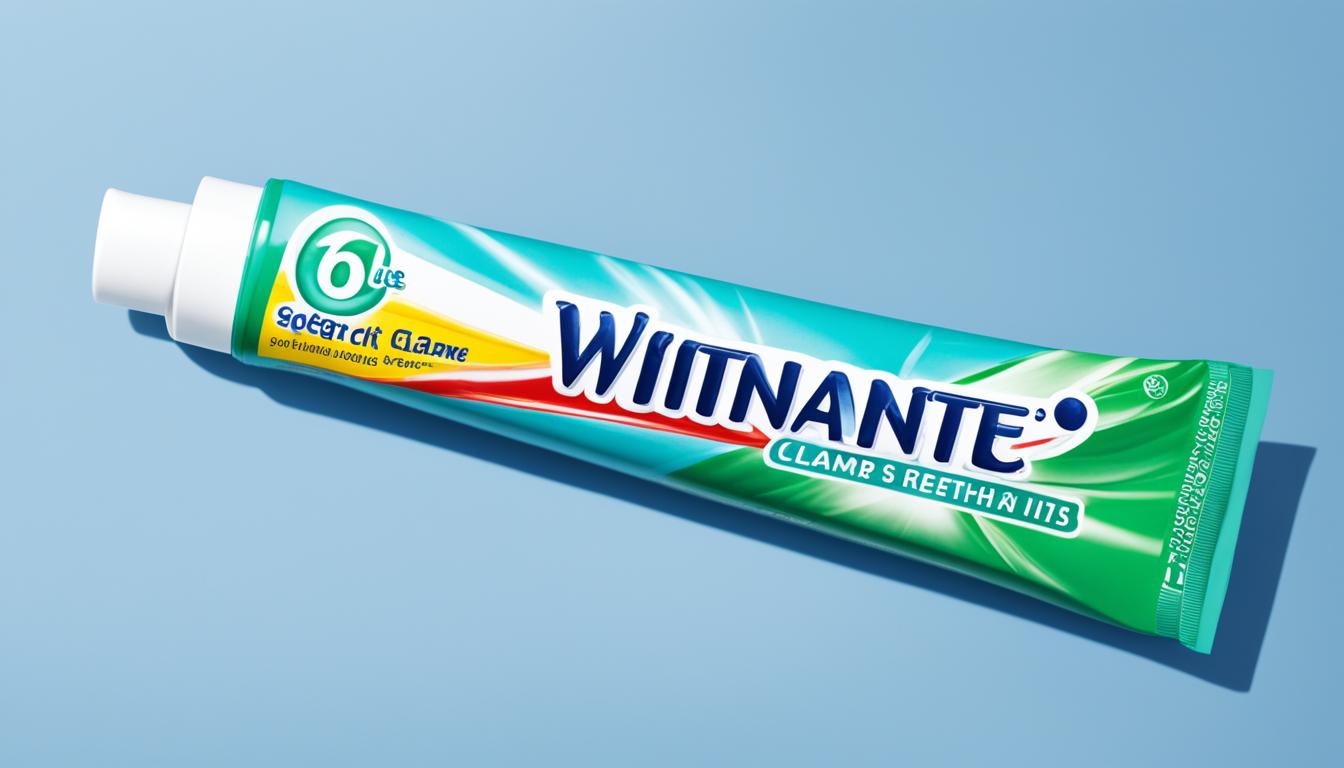**Surprising but true:** Hyperbole holds a **big** place in American talk, especially in ads. Marketers use this strong tool to **grab eyeballs**, convince buyers, elevate brand awareness, and **boost sales**. In America, there’s a **love for exaggeration**, with terms like “amazing” and “fantastic” grabbing attention. In marketing, hyperbole shows up in many ways—from bold claims of greatness to creating unforgettable brand moments. This style deeply affects how folks see products and brands.
Key Takeaways
- Hyperbole is widely used in American advertising to grab attention, persuade consumers, and drive sales.
- American culture embraces exaggeration, using words like “amazing” and “fantastic” to captivate audiences.
- Hyperbolic claims of superiority, breakthroughs, unbeatable prices, life-changing results, and ultimate experiences are commonly employed by marketers.
- Understanding the impact of hyperbole in advertising can help businesses enhance their marketing strategies and build brand awareness.
- Hyperbole can shape consumer perception and create a strong brand identity.
The Best!
One common marketing strategy is to use hyperbolic claims to position a product or service as the absolute best. Advertisements often make statements like “the best in the world” or “number one choice” to appeal to consumers’ desire for high quality and create a sense of exclusivity. These exaggerations create a competitive edge for the brand by emphasizing superiority and attracting consumers’ attention.
When a brand claims to be the best, it not only stands out from the competition but also positions itself as the leading choice in the industry. Consumers are naturally drawn to products or services that are perceived to be superior, and hyperbolic claims of superiority play into this desire for the best.
By positioning themselves as the best, brands create a sense of exclusivity. Consumers who choose the best believe that they are making a wise and discerning decision. This leads to a feeling of prestige and satisfaction, further increasing brand loyalty and advocacy.
Furthermore, hyperbolic claims of superiority provide a competitive edge for brands. They capture consumers’ attention and make the product or service more memorable. When faced with multiple options, consumers are more likely to choose the brand that positions itself as the best, based on the belief that it offers a higher level of quality and satisfaction.
In a crowded marketplace, standing out is crucial, and hyperbolic claims of superiority allow brands to do just that. By emphasizing their excellence and positioning themselves as the ultimate choice, brands can differentiate themselves from competitors and establish a strong presence in the minds of consumers.
| Benefits of Hyperbolic Claims of Superiority: |
|---|
| 1. Differentiate from competitors |
| 2. Attract consumers’ attention |
| 3. Increase brand loyalty and advocacy |
| 4. Create a sense of exclusivity |
| 5. Enhance brand positioning |
When used appropriately and backed by evidence, hyperbolic claims of superiority can be a powerful tool in the marketer’s arsenal. However, it’s important to strike a balance and ensure that the claims are believable and resonate with consumers. If overused or perceived as disingenuous, hyperbolic claims can have a negative impact on the brand’s reputation.
Next, we’ll explore another aspect of hyperbole in advertising: how brands utilize hyperbolic claims to present their products or services as revolutionary innovations.
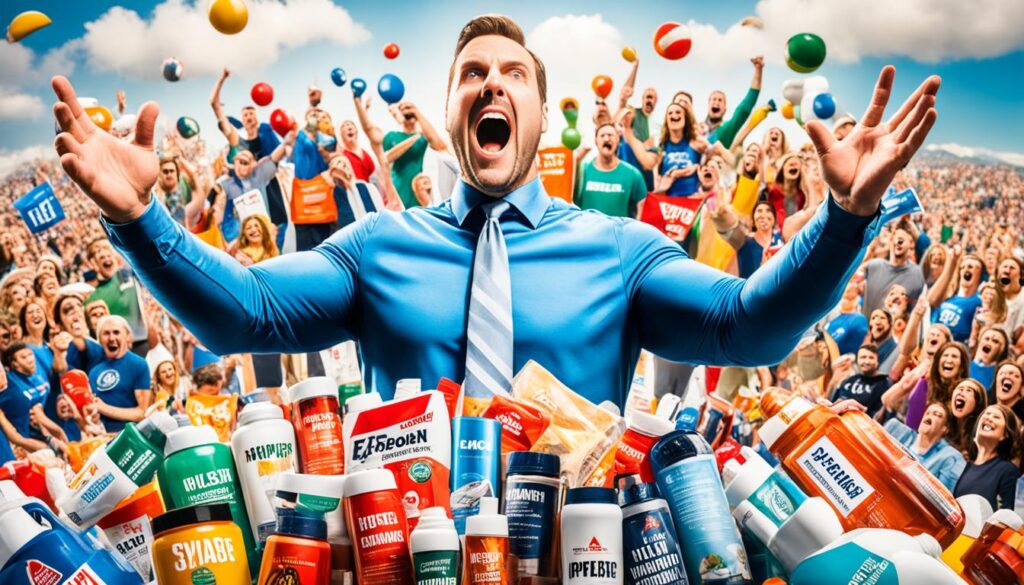
Revolutionary Innovation
In the fast-paced world of business, staying ahead of the competition requires constant innovation and breakthroughs. Entrepreneurs and industry leaders understand the importance of capturing the attention and excitement of potential investors and customers. That’s where hyperbolic claims come into play.
When presenting new products or services, business pitches often utilize hyperbole to position them as revolutionary innovations. By exaggerating the impact and novelty of their offerings, companies aim to create a sense of urgency and demonstrate their position at the forefront of industry advancement.
Imagine a startup founder confidently sharing how their groundbreaking technology will disrupt an entire industry, claiming that it will transform the way we live and work. These hyperbolic claims generate excitement and spark curiosity among investors, who are eager to be part of the next big thing.
From cutting-edge tech startups to revolutionary medical advancements, hyperbole is an essential tool in showcasing the potential of groundbreaking ideas. By instilling a sense of excitement and possibility, hyperbolic claims enable entrepreneurs to attract the attention and support needed to turn their vision into reality.
“Our product is set to revolutionize the way people communicate. It’s unlike anything the world has ever seen before. Get ready to witness the future of connectivity!”
Hyperbolic claims create a buzz and generate anticipation, setting the stage for industry advancement and disruption. Visionary leaders understand that in order to make an impact, they need to break through the noise and capture the imagination of their audience. Hyperbole allows them to do just that.
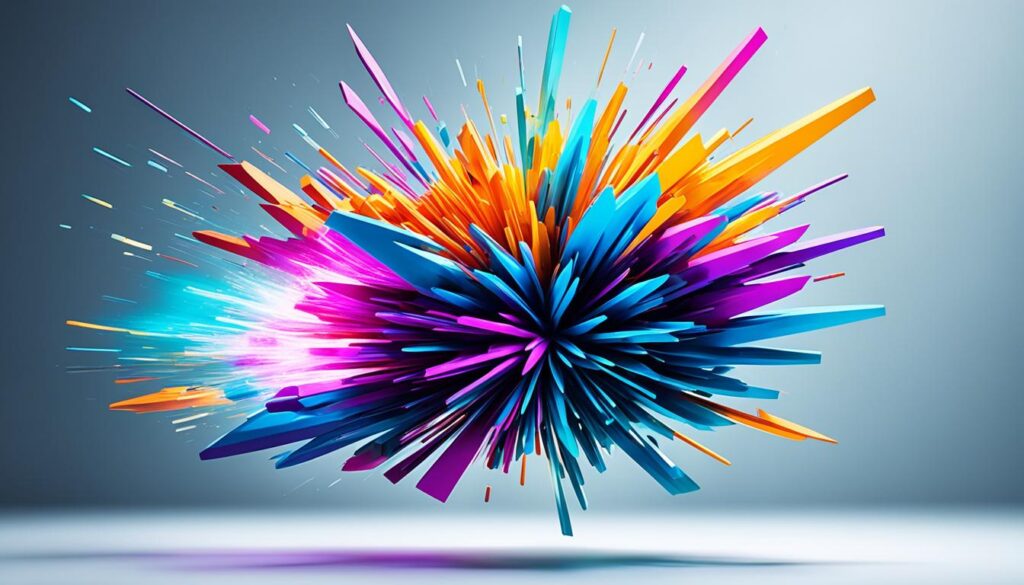
Unbeatable Prices
Price-driven marketing is a powerful strategy that leverages hyperbole to emphasize the value proposition of a product or service. By employing hyperbolic promises of affordability and unbeatable prices, businesses aim to capture consumers’ attention and create a perception of significant savings. This approach not only influences purchasing decisions but also establishes a competitive advantage in the market.
Creating an Illusion of Affordability
Customers are naturally drawn to affordability and the perception of getting the best deal. Price-driven marketing utilizes hyperbolic language to create an illusion of affordability, making consumers feel that they are getting the most value for their money. Phrases such as “unbeatable prices” or “lowest prices guaranteed” instantly grab attention and ignite curiosity, compelling potential buyers to explore the offering further.
For example, in the competitive world of e-commerce, companies like Amazon and Walmart employ hyperbole in their marketing strategies to position themselves as cost leaders. They make bold claims of offering the lowest prices on a wide range of products, attracting price-conscious consumers seeking the best deals and value.
Establishing a Competitive Edge
Hyperbolic promises of affordability not only entice consumers but also give businesses a competitive edge in the market. By positioning themselves as the go-to source for unbeatable prices, companies can attract price-sensitive customers who prioritize value in their purchasing decisions. This allows businesses to capture a larger share of the market and outshine competitors who may not emphasize price-driven marketing.
For instance, budget airlines like Southwest and Spirit Airlines leverage hyperbole to highlight their low-cost airfare options. By promoting budget-friendly prices that are hard to resist, they position themselves as the preferred choice for travelers who want to save on their flights, giving them a significant competitive advantage in the airline industry.
| Benefits of Price-Driven Marketing | Impact on Consumer Behavior |
|---|---|
|
|
Price-driven marketing, supported by hyperbolic promises of affordability, has become a go-to strategy for brands looking to stand out in their respective industries. By effectively communicating the value and savings customers can expect, businesses can capture consumers’ attention, influence their purchase decisions, and ultimately secure a competitive advantage in the market.
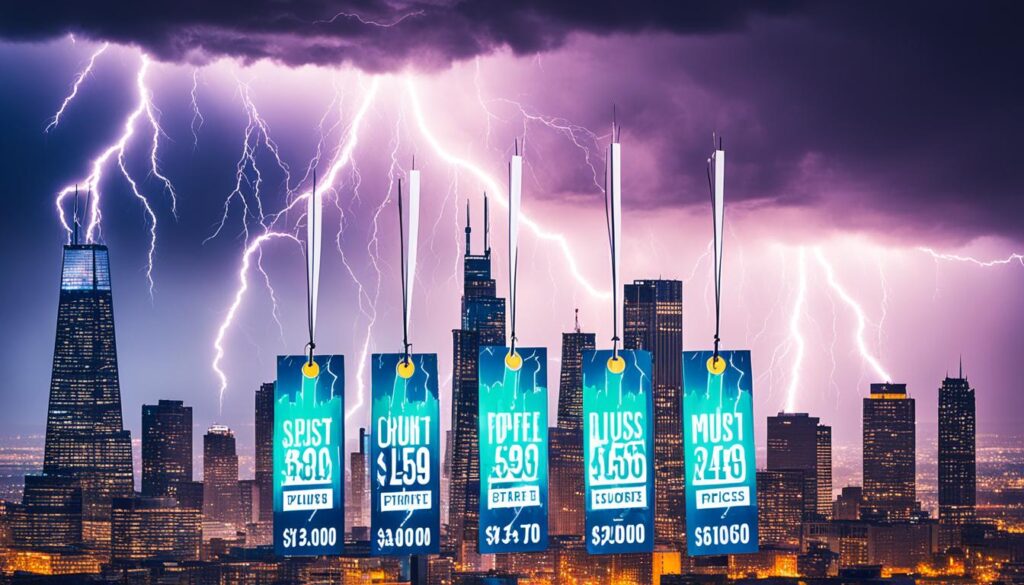
Life-Changing Results
In the highly competitive industries of fitness, beauty, and personal development, businesses often rely on hyperbole to showcase their products or services as truly transformative. By tapping into consumers’ innate desires for self-improvement and personal growth, marketers make exaggerated claims of hyperbolic transformations.
Consumers are drawn to the idea of significant changes in their lives, whether it be achieving their dream physique, enhancing their natural beauty, or unlocking their full potential. Marketers understand these consumer desires and utilize hyperbole to create a compelling narrative around their offerings, promising radical and life-changing results.
The Power of Hyperbolic Transformations
Hyperbolic transformations have the ability to captivate consumers and arouse their curiosity. Through exaggerated claims, businesses create aspirational goals that encourage individuals to invest in their products or services. Whether it’s a fitness program promising to turn an average person into a chiseled athlete or a beauty product claiming to provide age-defying results, hyperbolic transformations tap into the deep-seated desire for change and improvement.
“Our revolutionary fitness program guarantees you’ll achieve results beyond your wildest dreams. Transform your body and conquer new limits in just 12 weeks!” – Fitness Brand X
These overly ambitious promises give consumers hope and motivation to take action. By showcasing the potential for dramatic change, businesses create a sense of urgency, prompting individuals to try their offerings in pursuit of a better version of themselves.
Consumer Desires and Hyperbolic Marketing
The obsession with self-improvement and personal development has become increasingly prevalent in today’s society. Consumers aspire to become the best versions of themselves in areas such as physical appearance, mental well-being, and personal success. The fitness, beauty, and personal development industries cater to these desires, leveraging hyperbolic marketing techniques to position their products as the catalyst for desired transformations.
Through clever advertising campaigns, brands are able to establish emotional connections with their target audience by tapping into their deepest desires. By framing their products or services as tools for achieving life-changing results, businesses generate excitement and fuel consumer motivation to take action.
Beauty Industry Example
An excellent illustration of hyperbolic transformations can be witnessed in the beauty industry. Cosmetic brands strategically use metaphoric language, visuals, and persuasive narratives to create the perception of drastic and positive changes in one’s appearance.
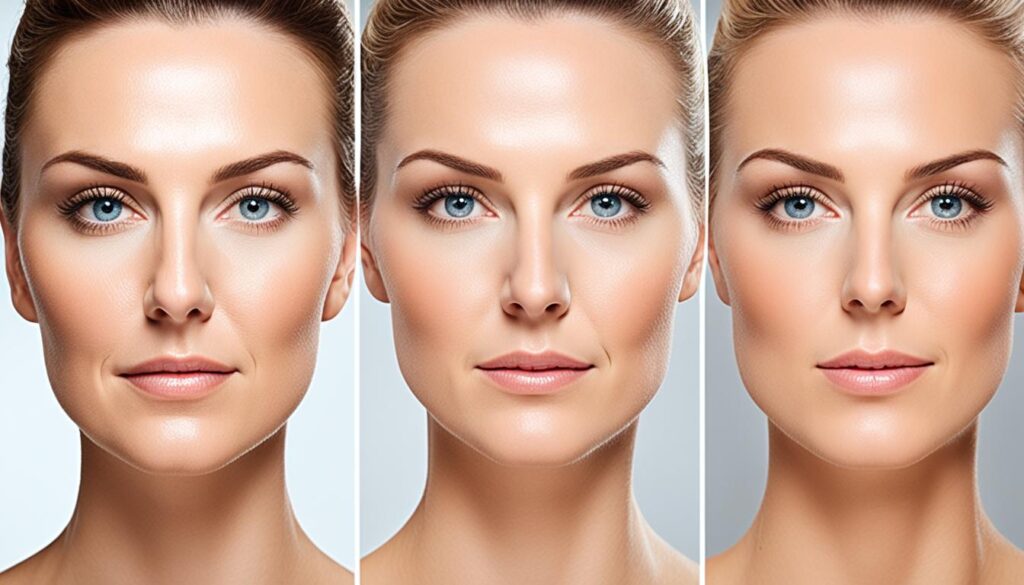
Advertisements often depict models with flawless skin, luscious hair, and perfect features. They imply that by using their products, consumers can achieve the same level of beauty and confidence. By using hyperbolic transformations, the beauty industry taps into consumers’ desire to enhance their physical attractiveness, promising a life-changing experience through their products and services.
The Ultimate Experience
In the world of branding and marketing, businesses strive to create the ultimate experience for their customers. To achieve this, many companies turn to hyperbolic branding and experiential marketing, utilizing the power of emotional connection and loyalty to captivate audiences.
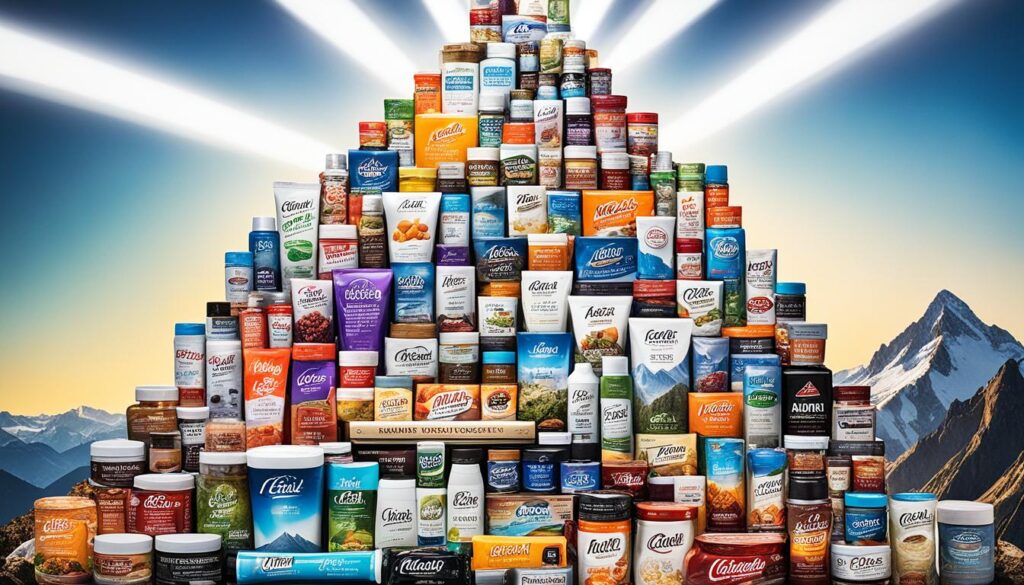
“Our brand offers an experience like no other. Step into a world of luxury and comfort that will leave you amazed.”
Through hyperbolic claims, such as promising an unmatched level of luxury or unparalleled enjoyment, brands are able to position themselves as the epitome of excellence. This exaggeration creates a sense of exclusivity and aspiration, enticing consumers to engage with the brand on a deeper level.
But hyperbolic branding is not just about making big claims. It’s about crafting an emotional connection with consumers, tapping into their desires and dreams. By exaggerating the experience associated with their offerings, brands create a sense of longing and desire, fostering loyalty and differentiation.
Creating an Emotional Connection
One of the key elements of hyperbolic branding is the ability to create an emotional connection with consumers. Brands that can evoke strong emotions in their audience are more likely to establish a lasting bond and, ultimately, secure their loyalty.
- Through storytelling and immersive experiences, brands can transport consumers to a world where their dreams become a reality.
- By appealing to consumers’ deepest desires and aspirations, brands create a strong emotional connection that goes beyond superficial marketing.
- Hyperbolic claims of unmatched excellence and incredible experiences resonate with consumers, making them feel special and valued.
When consumers feel emotionally connected to a brand, they are more likely to become loyal advocates, spreading the word and driving others to experience the brand for themselves.
Achieving Differentiation
In a competitive market, standing out from the crowd is essential for success. Hyperbolic branding allows brands to differentiate themselves by presenting an experience that goes above and beyond what competitors can offer.
- Exaggerated claims of superiority and excellence set a brand apart, positioning it as the clear choice for consumers.
- By showcasing an enhanced experience, brands can carve out a unique niche and attract a dedicated following.
- Hyperbolic branding builds a perception of exclusivity, making consumers feel privileged to be a part of the brand’s world.
Through hyperbolic branding and experiential marketing, brands create a world that consumers aspire to be a part of. By making bold claims and fostering emotional connections, brands establish themselves as the ultimate choice, fostering loyalty and differentiation.
| Benefits of Hyperbolic Branding | Examples |
|---|---|
| Creates a sense of exclusivity and aspiration | Luxury fashion brands like Chanel and Louis Vuitton |
| Establishes an emotional connection with consumers | Disney’s magical theme parks |
| Differentiates the brand from competitors | Apple’s groundbreaking product launches |
| Fosters loyalty and advocacy | Starbucks’ personalized customer experience |
Visual Hyperbole in Advertising
Advertisers understand the power of visual hyperbole in capturing consumers’ attention and showcasing the incredible benefits of their products. By creating visually exaggerated ads, brands can effectively communicate the unique advantages that their offerings provide. Two iconic examples of visual hyperbole include the Red Bull energy drink campaign and the Guinness “For Strength” advertisements.
When it comes to energy drinks, Red Bull’s visual hyperbole takes flight. The brand’s famous campaign promised consumers “wings” – aligning their product with the ability to grant superhuman energy. These visually compelling ads depicted individuals soaring through the skies, symbolizing the limitless energy and boundless possibilities that Red Bull claimed to deliver.
Similarly, Guinness capitalized on visual hyperbole to promote the strength-enhancing benefits of their beloved stout. Their classic advertisements showcased individuals accomplishing extraordinary feats of strength and endurance after drinking Guinness. By visually exaggerating the product’s impact, Guinness effectively communicated the idea that enjoying their beer could empower consumers to achieve impressive physical prowess.
The use of visual hyperbole creates a profound impact on consumers’ perceptions as it appeals to their desires for elevated abilities and extraordinary experiences. These ads establish a strong link between the product and the sought-after benefits, compelling individuals to associate themselves with the brand and its exceptional offerings.
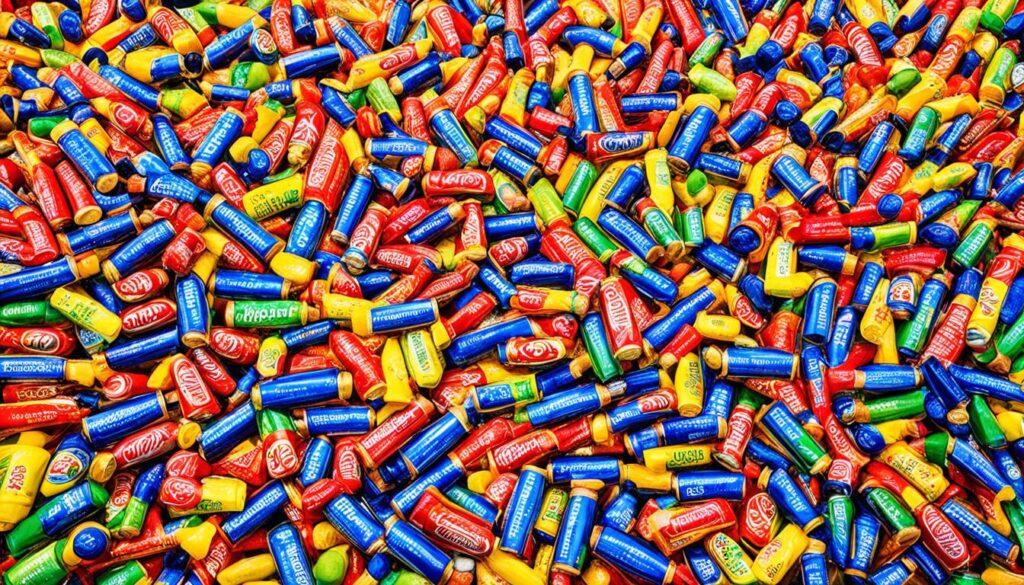
| Brand | Campaign Message |
|---|---|
| Red Bull | Promising consumers wings and the ability to soar to new heights with their energy drink. |
| Guinness | Showing drinkers performing extraordinary feats of strength, highlighting the physical benefits of their stout. |
Audio Puffery Advertising Examples
In addition to visual hyperbole, advertisers also harness the power of audio cues to create exaggerated perceptions of their product benefits. These auditory elements add an extra layer of impact to capture the attention of consumers.
One remarkable example is the Calgon advertisement that transports viewers to a state of tranquility by replacing noise and stress with the soothing sound of a luxurious bath. This audio cue enhances the sensory experience, emphasizing the transformative power of their product.
“Calgon, take me away!”
Another memorable instance is the Toyota Corolla commercial featuring a man calmly seated next to sleeping badgers while a cannon dramatically fires in the background. The juxtaposition of peacefulness and chaos sparks intrigue and curiosity, enticing viewers to associate the Toyota Corolla with extraordinary calmness and composure.
Take a moment to listen closely to the audio in these advertisements and let the power of sound ignite your imagination.
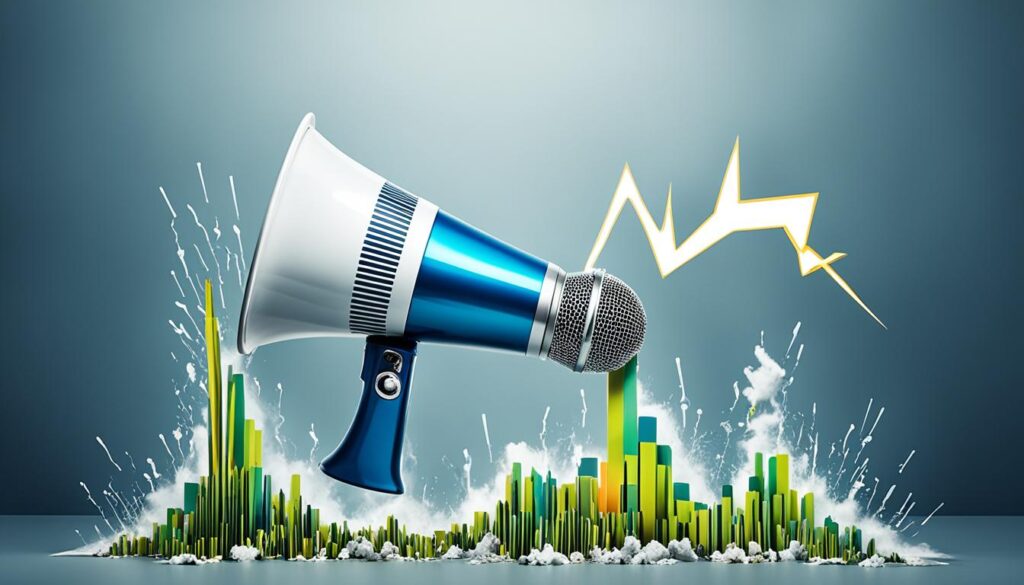
How Audio Cues Impact Advertising
Audio cues in advertising play a critical role in creating a immersive experience for the audience. By utilizing sound as a storytelling tool, brands can evoke emotions, establish a memorable identity, and strengthen the overall message being conveyed.
Table: Comparison of the Use of Audio Cues in Advertising
| Advertiser | Product | Audio Cue |
|---|---|---|
| Calgon | Bath products | A relaxing and peaceful sound of water |
| Toyota | Corolla | A serene ambiance alongside a loud cannon blast |
Conclusion
In conclusion, hyperbole in advertising has a profound impact on consumer perception and brand identity. Through the art of exaggeration, marketers are able to captivate audiences and create a sense of exclusivity that sets their products or services apart. By employing hyperbolic claims of superiority, breakthroughs, unbeatable prices, life-changing results, and ultimate experiences, businesses can influence consumer behavior and drive sales.
Hyperbole serves as a powerful tool in shaping consumer perception. It allows brands to make bold statements and highlight the unique features of their offerings, leaving a lasting impression on potential customers. Moreover, hyperbole generates excitement and interest among consumers, compelling them to explore what a product or service has to offer.
By understanding the impact of hyperbole in advertising, businesses can leverage its effectiveness to enhance their marketing strategies. They can craft messages that resonate with their target audience, build brand loyalty, and establish a distinct identity in the market. Harnessing the power of hyperbole in a strategic and authentic manner can lead to increased brand visibility, consumer engagement, and ultimately, business success.
FAQ
How does hyperbole play a role in advertising?
What are some examples of hyperbolic claims used in marketing?
How does hyperbole create a competitive edge for brands?
How does hyperbole generate excitement and capture attention in business pitches?
How does hyperbole influence purchasing decisions in price-driven marketing?
In which industries is hyperbole commonly used to portray products as life-changing?
How does hyperbole contribute to branding and experiential marketing?
How does visual hyperbole impact consumer perception?
Can you give examples of audio puffery in advertising?
What impact does hyperbole have on consumer perception and brand identity in advertising?
How does the use of hyperbole in advertising compare to the symbolism of the majestic eagle in Native lore?
In advertising, hyperbole is used to exaggerate a product’s benefits. Whereas, the majestic eagle symbolism in native lore represents strength and freedom. Both are impactful in their own ways, but the hyperbole in advertising is more about persuasion, while the eagle symbolism holds deeper cultural and spiritual significance.

